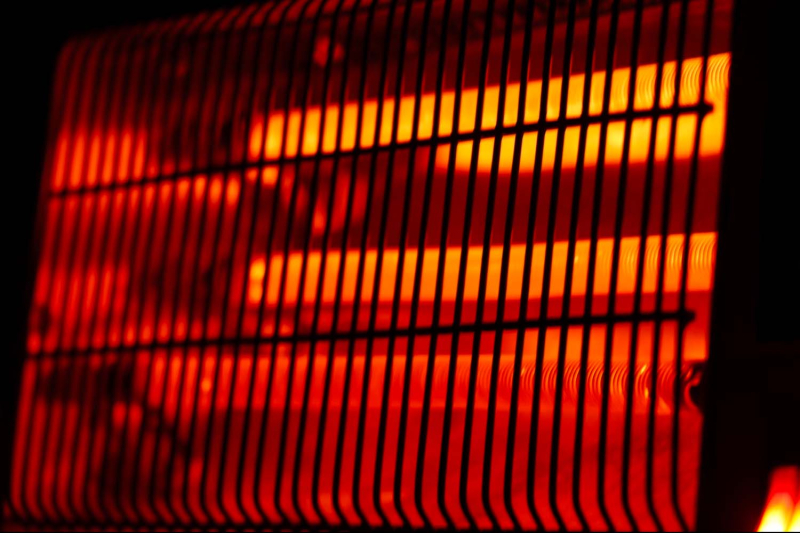
© Unsplash/Alirad Zare
In a context where controlling energy costs is becoming a priority for many French households, the choice of economical auxiliary heating is more relevant than ever. Faced with the diversity of solutions available on the market, it is essential to understand the advantages, disadvantages, and above all, the cost associated with each type of auxiliary heating.
Options vary from kerosene stoves, with initial costs of up to €400 plus the cost of fuel, to bioethanol heaters at around €500 for the appliance and €30 for fuel, including oil-filled radiators available from €25 to €150, and electric fan heaters whose prices range between €10 and €200.
Top auxiliary heating 2024:
- Petroleum stove
- Oil bath radiator (electric)
- Fan heater (electric)
- Gas heater
- Wood stove
Here is an overview of the best auxiliary heating solutions available in France in 2024.
Simple to install, and very efficient for heating quickly a space, kerosene stoves are undoubtedly the best compromise in many cases for additionally heating a room.
Semi-electronic models also allow & #8217;optimize fuel consumption as best as possible, while stopping expenditure when the desired temperature is reached.
The initial cost is between €400 and €500 for electronic models and around €300 for more basic models. However, be careful with their maintenance: to avoid releasing toxic fumes, you must ensure that you respect this point.
They are not recommended at night when you are sleeping, and it is strongly recommended to always opt for completely dearomatized fuel otherwise you will leave a strong smell of petroleum in the room during use.
Count around €65 for the can of dearomatized fuel.
Another more practical option in certain cases, oil-filled radiators have the advantage of storing heat in oil which can thus be released more efficiently in the room even when you have just turned off the device.
They are very easy to install and move and require little or no maintenance. maintenance. Some more efficient models include a fan which allows the room to heat up more quickly.
Their unit cost is between €25 and €150 and we can also find them even cheaper on the second-hand market. Their only drawback is that they consume a lot of electricity, especially when lighting.
Having an electrical network and sockets in good condition is essential otherwise you risk causing circuit breakers, or even short circuits with the start of a fire. Connecting them to extension cords is also strongly discouraged.
Ideal for small, relatively well insulated rooms such as bathrooms (if appropriate precautions are taken, these are electrical appliances with a risk of electrocution) these devices provide the heat quite quickly, with an immediate feeling of comfort, especially if you place yourself in front of the heated outlet.
They are also very affordable with models ranging in price from 10 to 200 euros. However, their power is often limited, and they are therefore not suitable for rooms of more than ten square meters. A good alternative, which can also make it cold in winter, are heat pumps – generally suitable for conditioning air in larger rooms.
Many models are reversible. And because the heat is pumped from outside, heat pumps are much more energy efficient. Additional mobile models exist with prices around 200 – €300 for entry level.
Also very comfortable as an auxiliary solution and suitable for medium-sized volumes, even imperfectly insulated, gas heaters can in certain cases represent a good alternative for your auxiliary heating.
They have a very accessible entry ticket (their price is between €50 and €200 on average), are easily installed , require a little maintenance but it remains minimal (check the expiry date of the flexible tubes which transport the gas for example).
They also only pose &# 8217;a reduced risk of carbon monoxide emanation unlike oil or wood heaters. However, they have the drawback of making the room a little humid. The cost of fuel depends on gas prices (currently quite high).
And of course they come with all the risks and precautions to be taken with a gas heater.
Another option that is a little more restrictive : auxiliary wood heating. The latter have, for the best models operating with pellets, one of the best efficiencies for this type of heating.
However, the initial cost is significantly more higher than other options in this comparison. Particularly because an evacuation or chimney is essential for their operation.
Which therefore requires small work, and makes these devices completely fixed in the room . In some cities their use is prohibited due to the emission of fine particles.
The average consumption of an electric space heater is 2 kWh, while a gas space heater will use 250 grams of butane per hour.
The cost of use depends on current energy prices, which are, at the start of 2024, rather to the disadvantage of fossil fuels. But which also depends on the use you plan for this type of heating.
Very occasional use therefore mainly raises the question of costs on the initial cost purchase of equipment. While more sustained use focuses more attention on the price of the energy source.
Choosing the most economical space heater will depend on your specific needs, the size of the room to be heated, and your initial and long-term budget. Wood stoves appear to be a very economical option for those prepared to make the initial investment, while oil-filled radiators and electric fan heaters may be more suitable for occasional needs despite their higher energy consumption.
Gas heaters offer a good compromise between initial cost and efficiency, but require special attention to safety. Same thing for kerosene stoves which can represent a fairly simple alternative to install, provided you do not neglect their maintenance.
📍 To not miss any news from Presse-citron, follow us on Google News and WhatsApp.

